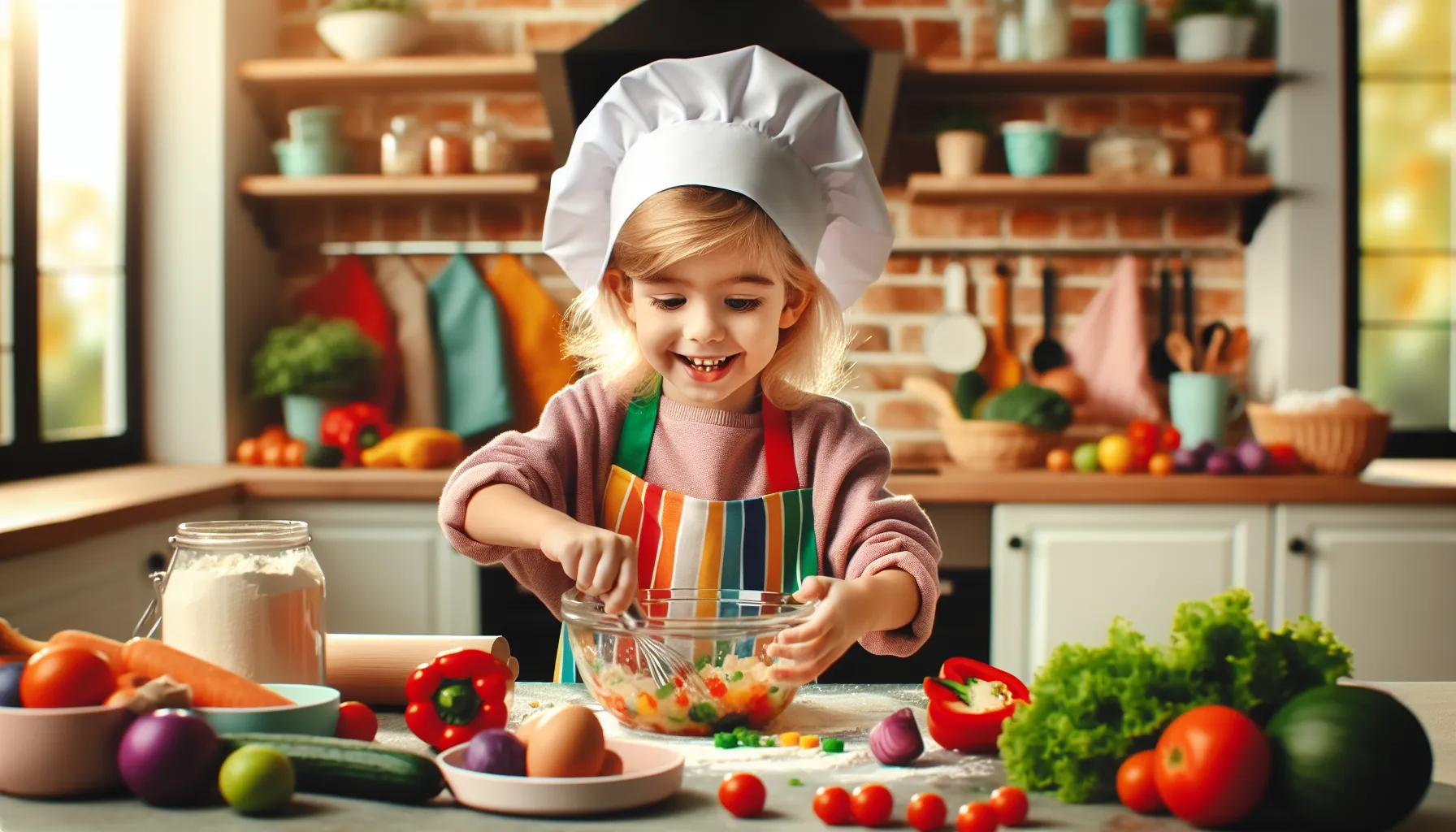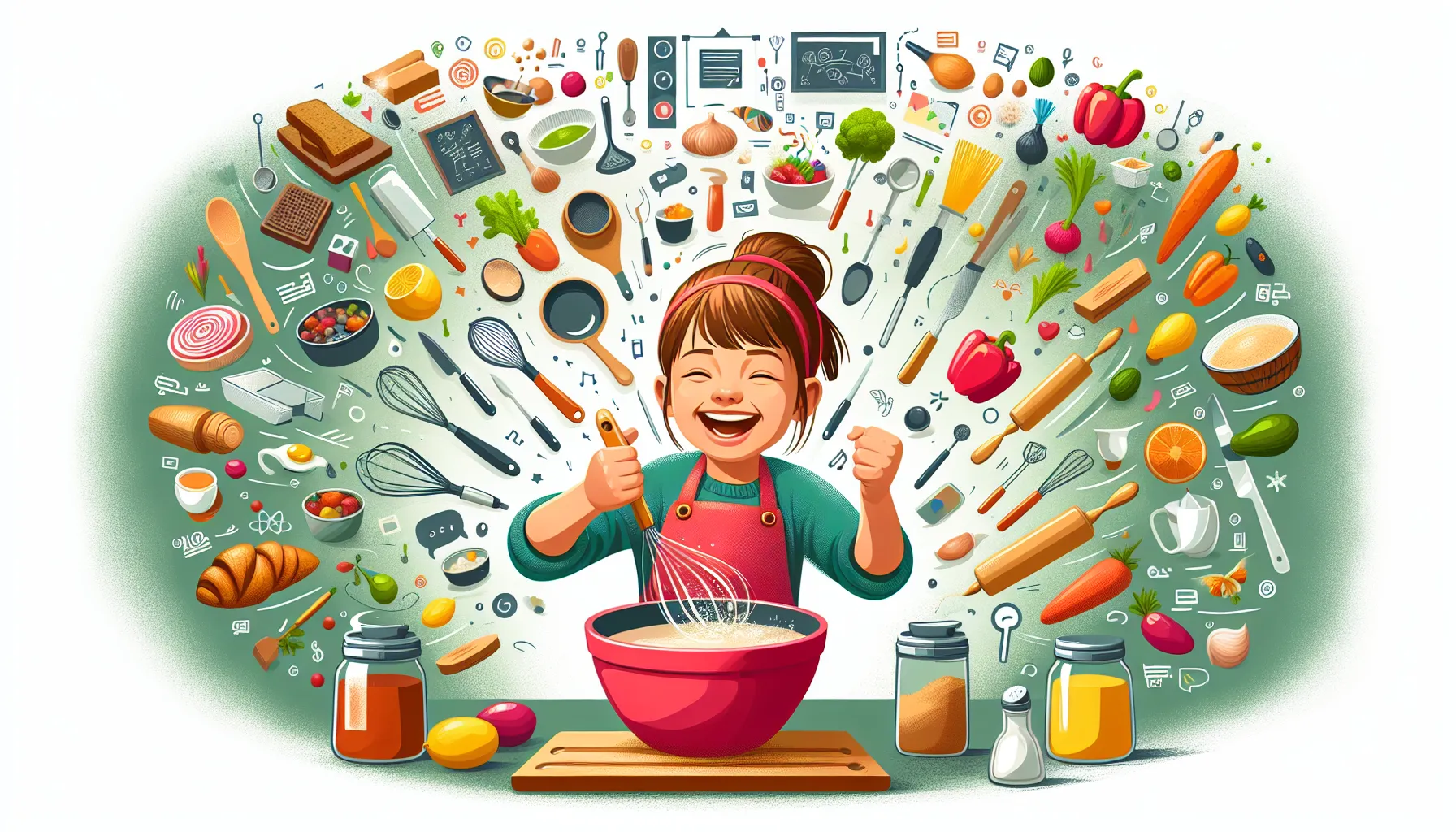
Key Takeaways
- Kids cooking lesson plans combine fun, education, and essential life skill-building, fostering confidence and independence in young learners.
- Interactive cooking encourages healthy eating habits by engaging children in meal preparation and connecting them with nutritious ingredients.
- Cooking lessons strengthen family bonds by creating opportunities for teamwork, communication, and shared memories in the kitchen.
- Effective lesson plans should include age-appropriate tasks, a balance of fun and learning, and clear safety guidelines to ensure a productive experience.
- Popular formats include virtual classes, in-person workshops, and home-based programs, offering flexibility to match children’s interests and family schedules.
- When choosing a plan, consider the child’s skill level, aligned interests, and the materials or time flexibility offered to fit your lifestyle seamlessly.
Cooking with kids is more than just preparing meals—it’s an opportunity to teach, bond, and create lasting memories. Whether it’s stirring batter or rolling dough, every small task builds confidence and introduces essential skills. But how do we make these lessons engaging, educational, and fun for young learners?
Kids thrive when learning feels like play. By turning cooking into an interactive experience, we can teach them to follow instructions, explore creativity, and even understand basic science concepts. It’s not just about the food; it’s about fostering independence and curiosity in the kitchen.
Are you ready to inspire the young chefs in your life? With the right approach, cooking lessons can spark a lifelong love for making and sharing meals while giving kids valuable tools they’ll carry into adulthood. Let’s dive into how we can make this experience rewarding for everyone involved.
Benefits Of Kids Cooking Lesson Plans
Kids cooking lesson plans provide more than just tasty results—they enrich learning and foster meaningful connections in fun and practical ways. They combine valuable skill-building activities with opportunities to teach children about health and responsibility.
Encouraging Healthy Eating Habits
Interactive cooking lessons help children understand the value of nutritious foods. When kids actively participate in preparing meals, they become more curious about the ingredients they use. For instance, they might explore the flavors of fresh vegetables or learn how whole grains contribute to their energy. This involvement helps them form positive associations with healthy eating and reduces resistance to trying new foods.
Building Life Skills And Independence
Cooking builds confidence and teaches essential skills like following instructions, measuring ingredients, and managing time. These tasks improve problem-solving abilities and attention to detail. For example, a recipe requiring exact measurements demonstrates the importance of precision, while multitasking during preparation hones decision-making skills. With guidance, kids grow more self-sufficient and comfortable working in the kitchen.
Strengthening Family Bonds
Cooking together fosters communication and teamwork. As family members collaborate on a recipe, they share laughter, stories, and memorable experiences. This shared activity strengthens relationships and creates a nurturing environment. When children help in the kitchen, they feel valued while parents enjoy quality time with their young helpers.
Key Features Of Effective Kids Cooking Lesson Plans

Cooking lesson plans for kids should be engaging and educational. They play a significant role in nurturing children’s skills and confidence in the kitchen. Let’s explore what makes these plans impactful.
Age-Appropriate Recipes And Techniques
Choosing the right recipes matters. For younger kids, simple tasks like mixing ingredients or decorating treats work well. For older children, slightly advanced techniques such as measuring or chopping (using safe tools) can be introduced. Offering tasks that suit their abilities keeps them interested and encourages gradual skill-building.
Balance Of Fun And Education
Every lesson should mix learning with enjoyment. Add activities that focus on skills like measuring or following directions. At the same time, include playful elements like decorating cupcakes or naming dishes. This approach keeps children engaged while they learn practical skills and innovative thinking.
Safety Guidelines And Supervision
Clear safety rules are essential. Teach kids to handle kitchen tools carefully and explain why practices like washing hands and wearing aprons are important. Always supervise closely, especially during tasks involving knives or heated appliances. By prioritizing safety, we create a worry-free environment where children can confidently explore cooking activities.
Popular Types Of Kids Cooking Lesson Plans

Kids cooking lesson plans come in different formats, each offering learning and fun in unique ways. Choosing the right option can make the experience enjoyable while teaching valuable skills. Which approach works best for your child’s needs?
Virtual Cooking Classes
Virtual cooking classes combine learning and convenience. These classes allow kids to engage with instructors online, making them ideal for families with busy schedules or remote locations. Sessions often include live instruction, where children can follow along in real time, or prerecorded options, providing flexibility to learn at their pace.
Most virtual programs provide downloadable recipe cards, step-by-step video guidance, and ingredient lists to prep beforehand. With supervision, children get the chance to handle basic kitchen tools and ingredients independently. How can we make this setup more comfortable for first-time participants? Preparing tools and reviewing instructions together beforehand might help.
In-Person Workshops
In-person workshops bring hands-on learning and social engagement into the mix. These lessons typically feature small groups where children can interact with peers and instructors, enhancing their confidence and collaboration skills. Workshops often cover basic techniques, such as measuring, mixing, and food safety practices.
Taught in safe, supervised environments, these sessions allow kids to explore the textures and tools in a real kitchen setting. Some workshops include themed classes, focusing on cookies, pizzas, or seasonal treats. Do you think your child would enjoy exploring more complex steps like decorating or plating? Letting them try could spark even more excitement.
DIY Home-Based Programs
DIY home-based programs let families combine flexibility with creativity. These lesson plans often include structured guides, pre-planned recipes, and tips for involving kids of all ages. Parents or guardians play the teaching role, personalizing the process for their child’s pace and interests.
Tips For Choosing The Right Lesson Plan For Your Child
Finding the right cooking lesson plan for your child can feel overwhelming with so many options available. By focusing on key factors like skill level, resources, and scheduling needs, we can make the decision easier while keeping their learning fun and effective.
Considering Skill Level And Interests
Skill level is a critical starting point when selecting a lesson plan. Younger kids may benefit from simple activities like decorating cookies or learning easy recipes, while older children might enjoy more advanced techniques like kneading dough or following multi-step instructions. What excites your child? Aligning the lessons with their interests, such as baking, international cuisine, or snacks, keeps them engaged and motivated.
Reviewing Materials And Resources Provided
The right materials can transform cooking into an enjoyable learning activity. Review if the lesson plan comes with pre-measured ingredients or instructional guides that are easy to follow. Are the instructions clear and age-appropriate? Look for visual aids like illustrations or videos that make learning intuitive. High-quality materials save us the hassle of preparation and help focus on hands-on kitchen activities.
Ensuring Flexibility To Fit Your Schedule
We all lead busy lives, but fitting cooking lessons into your routine shouldn’t be a struggle. Does the lesson work around your availability? Consider plans that allow time flexibility, with options like short lesson durations or on-demand access. A plan that adapts to your family’s schedule makes it easier to prioritize this valuable activity without added stress.
Conclusion
Kids cooking lesson plans offer so much more than just teaching recipes—they spark creativity, build confidence, and create opportunities for meaningful connections. By choosing the right plan and fostering a safe, engaging environment, we can help our children develop essential life skills while enjoying the process.
Whether through virtual classes, hands-on workshops, or home-based activities, these lessons provide a foundation for healthy habits, independence, and cherished family moments. Let’s embrace the joy of cooking together and inspire the next generation of confident, curious young chefs.
Frequently Asked Questions
1. Why is cooking with kids important?
Cooking with kids is important because it teaches essential life skills like following instructions, measuring, and time management. It also encourages creativity, helps develop healthy eating habits, and strengthens family bonds through teamwork and communication.
2. At what age can kids start helping in the kitchen?
Kids can start helping in the kitchen as early as two or three years old with simple tasks like mixing or washing produce. The key is to assign age-appropriate tasks that match their developmental skills.
3. How does cooking promote healthy eating habits in children?
When children actively participate in cooking, they learn about nutritious ingredients and develop a better understanding of balanced meals. This hands-on involvement encourages them to try new foods and make healthier eating choices.
4. What are the benefits of kids cooking lesson plans?
Kids cooking lesson plans build life skills, teach independence, and foster problem-solving abilities. They also provide structured learning opportunities, promote creativity, and strengthen family connections by allowing parents and children to cook together.
5. How do I keep my child safe while cooking?
Ensure kitchen safety by teaching proper handling of tools, supervising closely, and using age-appropriate equipment. Establish clear rules about stove and knife use, and always prioritize safety guidelines to protect your child from potential hazards.
6. What types of kids cooking classes are available?
Popular options include virtual cooking classes, in-person workshops, and DIY home-based programs. Virtual classes offer flexibility, workshops provide hands-on learning, and DIY programs allow families to personalize the experience at home.
7. How do I choose the right cooking lesson plan for my child?
Consider your child’s age, skill level, and interests when selecting a lesson plan. Review materials to ensure they are age-appropriate and flexible enough to fit your family’s schedule for stress-free learning.
8. How can I keep cooking fun for kids?
Incorporate playful activities into the cooking process, try colorful and creative recipes, and celebrate their efforts. Allow children to explore their creativity while ensuring tasks remain engaging and enjoyable.
9. Can cooking help develop STEM skills in kids?
Yes! Cooking introduces basic science concepts like measuring, mixing, and temperature changes. Children can also practice math skills through measurements, patterns, and fractions, making cooking an excellent way to reinforce STEM learning.
10. Is it better to cook with kids at home or enroll them in classes?
Both options have benefits. Cooking at home fosters family bonding and allows personalization, while classes provide structured learning and social interaction. Choose based on your child’s preferences, learning style, and schedule.

